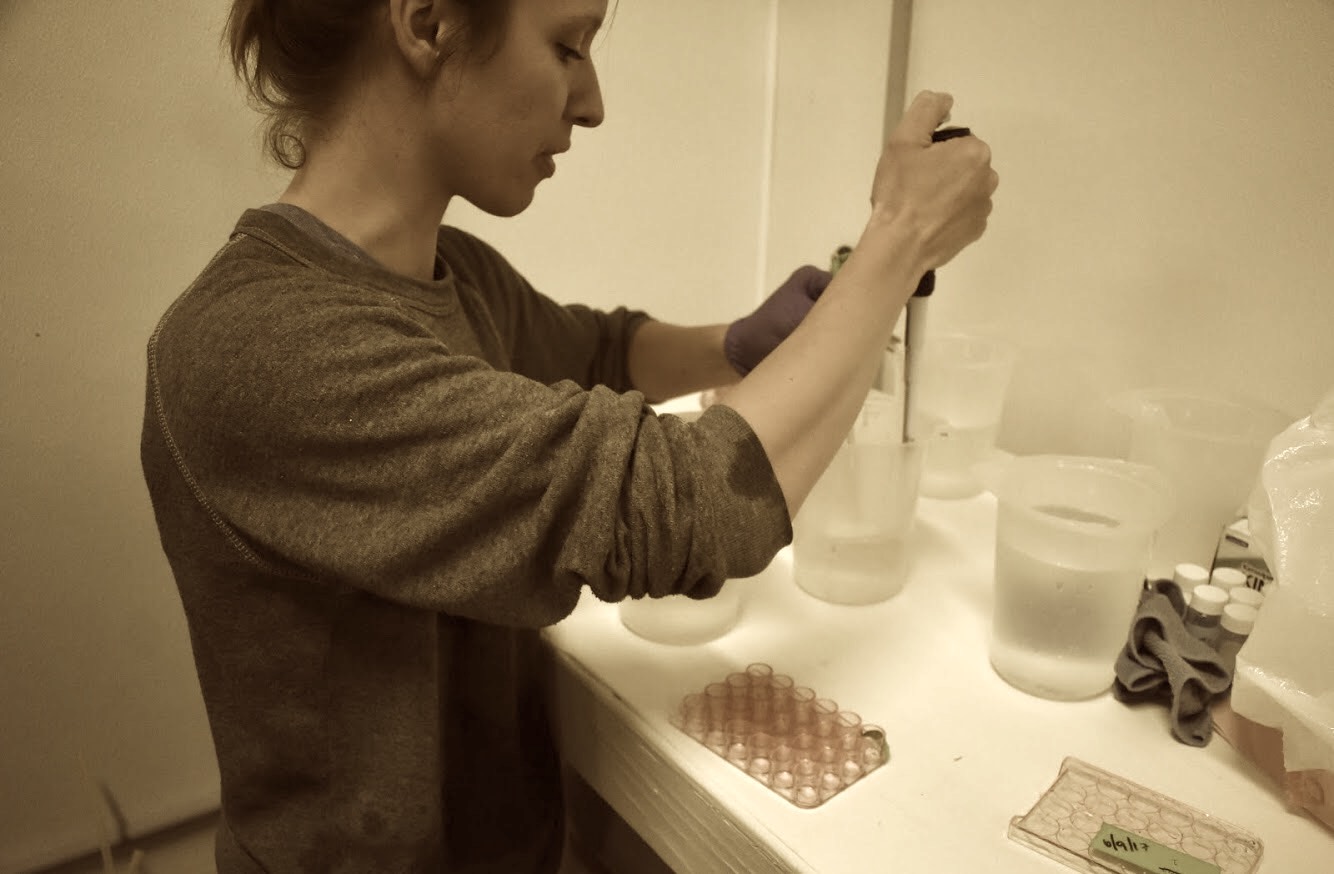Manchester, 6/13 & 6/14
6/13
- Temperature in system has fallen consistently over the past couple days- it was ~16degC. Noticed that the immersion heater I borrowed from Jon was reading 17degC, but was not heating. I swapped in the spare heater that we had purchased, and set it to 19degC. Will observe over the next couple days.
- Checked on temp of upwelling tank outside: 17degC. This is sufficient- I will not install a 2nd heater.
- Purchased pvc part and installed in a Calwell tank, which I will use tomorrow to feed the upwelling tank- hopefully I have some setters!
- New larvae present in: SN-6 low B (some), HL-6 low (a tiny bit). Did not collect today, will do so tomorrow.
- Connected the 100um and 180um buckets and adjusted flow/banjos for the 2-Bucket Challenge. Built new double-buckets for new larval groups.
- Notes on bucket configuration:
- I separate SN & NF groups into 2 buckets, 100um and 180um, after screening, but do not separate the K & HL groups (limited number of banjos). Mortality rate in the >180um group is considerably lower than in 100um; by separating the groups I minimize risk to the 180um, AND I maintain capacity in the 100um buckets to stock new larvae.
- 2 days prior to screening I connect the 2 buckets in SN & NF groups, setting flow in the 1st (100um) bucket, where live 100um larvae will flow into the 180um bucket. For K & HL groups, I install a 2nd, bucket, pushing live larvae from old bucket to new bucket.
- I screen on Mondays & Thursdays (usually); buckets are therefore connected in their 2-Bucket Challenge configuration on Tuesdays & Saturdays. The size groups are thus separated for 1 or 2 days.
- Gigas:
- Increased temp by 1degC - 17degC
- Removed bags, sprayed with fresh water, inspected for morts - no morts observed
- Tried vacuuming tanks, but instead drained completely with siphon, as water had become very dirty when removing bags.
6/14
- Arrival inspection:
- All larval banjos very dirty. A couple buckets nearly overflowing. Changed banjos immediately.
- Screened and cleaned setting tanks and checked for set larvae:
- Setters visibly inspected by first screening on to 450um, and viewing under microscope. Not very many, so I also sampled from the rest of the contents that did not hold on the 450um. Saw some newly set oysters, as well as lots of larvae that had yet to go through metamorphosis.
- Cleaned setters/culch/larvae in freshwater bath
- Oyster set observed in:
- NF-6 Ambient - lots of swimmers too
- SN-10 Low - lots of swimmers
- NF-10 Low - very few swimmers

- NF-10 Ambient - very few swimmers, here’s a photo of an oyster set:

- HL-10 Ambient - a couple set
- K-6 Low - no larvae visible in the sampled contents
- K6 Ambient - just 1 setter, lots eyed larvae
- K-10 Low - lots of morts, 1 larvae set visible
- Here’s a video of the SN-10 Ambient group, in which I didn’t see any set oysters, but there were lots of swimmers: https://youtu.be/SomPKWeWvfc
- Not enough setters to warrant using the outside upwelling tank. Returned all larvae/set to the 180um silos in the downweling tanks.
- Collected new larvae:

- Changed filters
- Rinsed larval catchment buckets
- Increased Gigas temp to 18degC. Heater does not appear to be keeping up with the flow rate. Will continue to increase temp by 1 degC/day, as to not shock them.
Written on June 14, 2017
